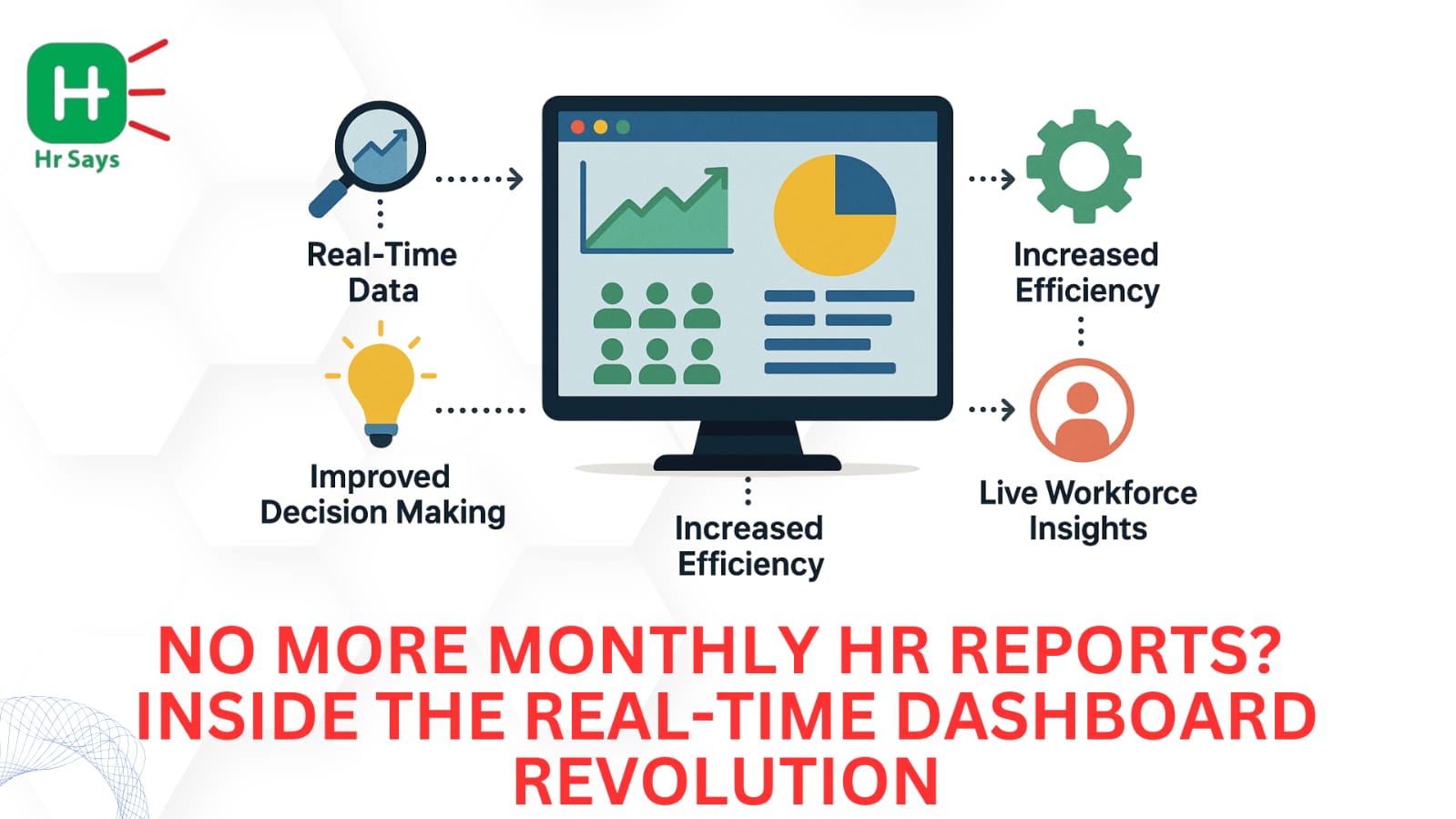What if waiting 30 days to know your employee turnover was already too late? In the time it takes to gather, clean, and report HR data, the damage may already be done. That’s why real-time dashboards aren’t a luxury anymore. They’re becoming the new rule.
The Monthly Report Is Dying
● It was slow.
● Often outdated by the time it reached leadership.
● Filled with context gaps and lagging indicators.
Managers had to guess. HR had to explain. Decisions? Delayed. And people problems? Usually discovered after they’d become expensive.
The truth? In 2025, reacting monthly is reacting late.
What Real-Time HR Dashboards Really Do
This isn’t about fancy graphs. It’s about actionable awareness.
A real-time HR dashboard offers:
● Live data on attrition, hiring, and engagement
● Drill-downs by department, geography, or tenure
● Alerts for anomalies—spikes in sick leave, sudden resignations
● Pulse survey sentiment tracking
This is data that speaks. And more importantly, data that shows up when it matters, not when it’s too late.
Case in Point: The Quiet Exit They Caught Just in Time
A mid-sized tech company in Berlin noticed something odd. Their real-time dashboard showed an 18% dip in employee engagement—across just one product team.
No one had quit yet. But Slack activity had slowed. PTOs were being taken back-to-back. A sharp rise in internal feedback requests appeared.
Leadership flagged it. The manager was brought in. Turns out, the team had quietly lost faith in a product pivot. Two listening sessions, one goal realignment, and a quick reorg later—no one quit.
Had it been a monthly report, that spike would’ve gone unnoticed.
Challenges? They Exist
Let’s not sugarcoat it.
● Data integration is messy. Most orgs have fragmented tools.
● Not every HR metric can be measured daily.
● Real-time visibility can cause overreactions if not framed well.
● Culture needs to adapt. Data fluency matters.
It does not mean, however, that this is not worth it.
What Makes a Dashboard Actually Work?
A dashboard is only as useful as the questions it answers. The best ones include:
● Turnover by manager, updated daily
● Offer acceptance rates in real-time
● Top reasons for exit (via pulse or exit interviews)
● Engagement dips linked to project changes
And yes, even early signals of burnout, tracked by workload indicators.
Conclusion
The monthly HR report served its time. But the speed of work has changed. People don’t leave jobs overnight. Signals show up first. Quietly. Subtly. Dashboards let you listen. In real time.
And if listening is the new HR superpower, the dashboard is where it begins.

 Monthly HR reports are losing their grip. Real-time dashboards are quietly replacing them. Not as a trend—but as a necessary shift. Visibility, speed, and clarity now decide how fast HR can act.
Monthly HR reports are losing their grip. Real-time dashboards are quietly replacing them. Not as a trend—but as a necessary shift. Visibility, speed, and clarity now decide how fast HR can act.












.jpeg)
.jpeg)

.jpeg)

.jpeg)


.jpeg)

.jpeg)

.jpeg)


